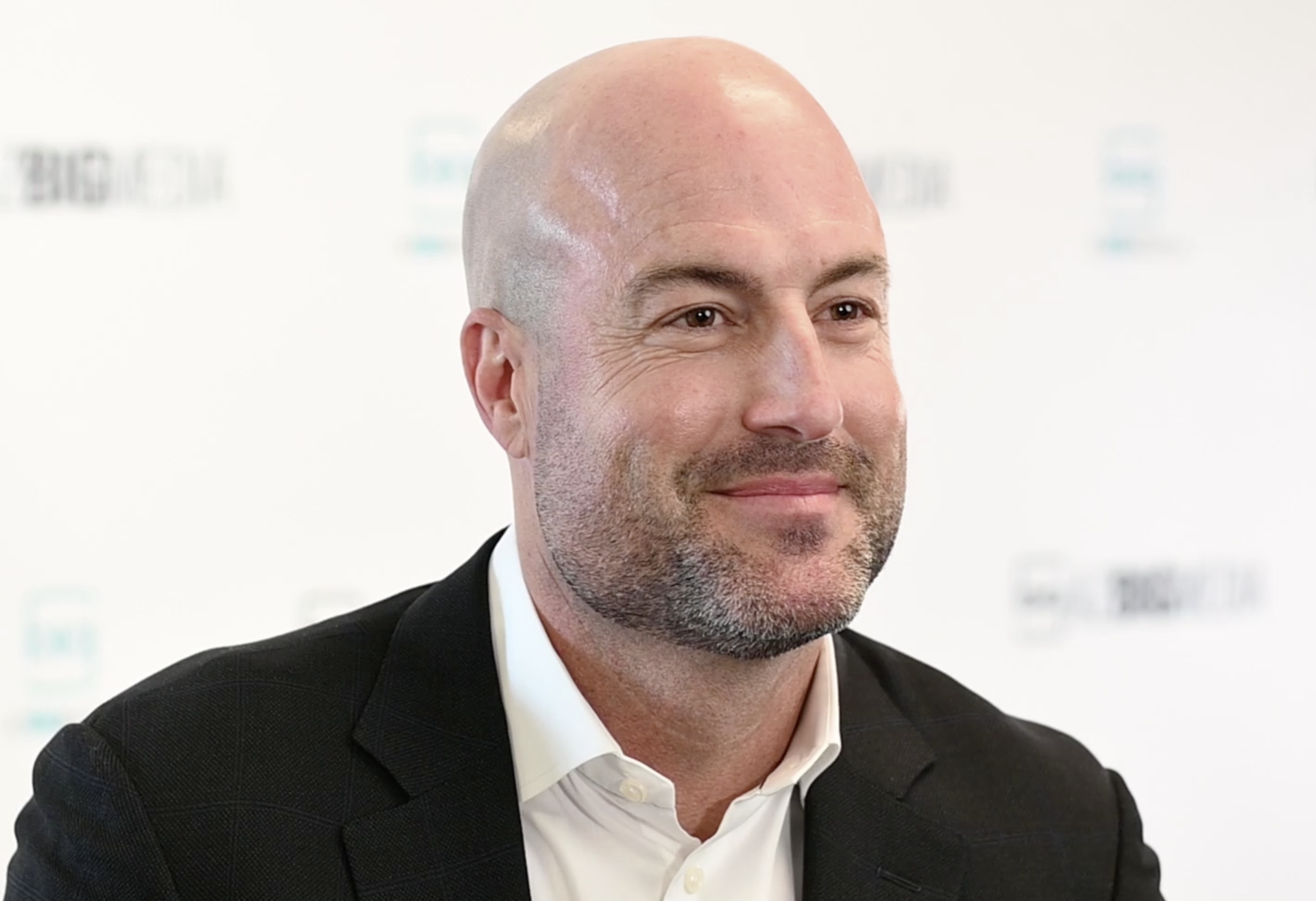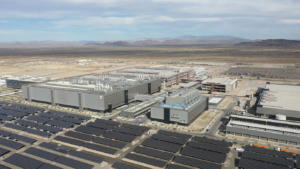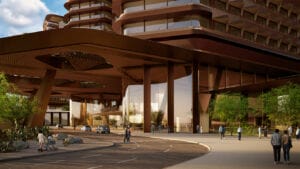As the promise of 2021 looms on the horizon, most people are anxious to close the books on what is likely the most unsettling year — from the pandemic to politics to PPP loans — we will ever experience. Strong leadership has never been more essential than it is today. To share some of their best leadership practices, Az Business magazine sat down with some Arizona business leaders to watch in 2021, including David E. Sellers, president and CEO of LGE Design Build.
Since joining LGE Design Build in 2000, Sellers has been involved in more than 15 million square feet of development and has shaped LGE’s team and process to what it is today. Here is our interview with David E. Sellers.
Here is the full transcript of the interview with David E. Sellers
Az Business: How has COVID impacted LGE?
David E. Sellers: Obviously, when it happened none of us really knew what to expect. We have a really good executive team and we sat down right when everything was getting serious as a team and really put together a contingency plan as far as at what levels were we going to make changes to our business. If we’re going to have to decrease in size, what’s that going to look like? We spent a few hours in a conference room trying to figure out a lot of options moving forward, depending on how extreme the recession and then everything that’s going on from a health standpoint. That was the most important thing. Making sure that we were looking out for our employees and making sure we had a healthy environment. We pretty much let everyone work from home immediately right out of the shoot and maybe 10 to 20 percent of people still wanted to come to the office all the time.
We had it sanitized on a regular basis. So, at first it was really touch and go because you weren’t really sure what to expect. It’s turned out to be nothing like we thought it was going to be. I thought we were going to go into a recession like 2008, 2009. It’s really strange that you have so much unemployment that’s occurred and then our housing market is booming. It just doesn’t make any sense.
I think that Arizona is going to be probably one of the winning states out of what’s happened and I think it’s just because you have a lot of people moving here, either because of the government or maybe they were already thinking about it and this has pushed them over the edge, but everything here is busy. We really didn’t lose any projects and any developments through COVID. If anything, it’s picked up just because there’s been definitely an increasing demand for certain product type, like warehouse and e-commerce product type and so, we’ve got a lot of that going on right now. So overall, our business hasn’t been negatively affected. It was definitely touch and go there for a bit, but I think everyone did a great job reacting to it and even now you’re not really out of it. You don’t know what’s going to happen next, but we just try to communicate openly and as much as possible as a team and react to anything that happens.
AB: How much did it help your industry that the governor came out early on and made construction an essential business?
DS: That was huge. That was huge because we were monitoring other markets. We have offices in Phoenix and in Dallas and luckily in those two markets ,construction was being sustained, but I mean watching Boston and Washington, D.C., and construction was shut down as well. I mean, that would have been terrible just from keeping employees on staff and whatnot. It would’ve been nearly impossible if you don’t have any cash flow happening, it would have been a really tough position to put our company on. So, that was huge.
AB: How were you able to manage your staff remotely?
DS: Zoom. Zoom’s been the best thing in the world. Zoom’s changed my life just because even me, I have guilt leaving the office. I always want to be at the office and even in summers when my family would go off on summer vacation, I would always come back to the office because I always wanted to be there and be a part of what’s going on and all of a sudden there’s Zoom and you can communicate with people and you can see the same thing and you can get a lot done and that totally transformed our business and so, the architecture side of our business is easy for those guys to connect. Any new projects we have connecting with clients, it made it a lot easier. So, there’s so many tools out there right now to communicate with staff, communicate with clients. I can’t imagine if this happened 15 years ago, what would have happened. It would have been a complete mess, but right now I think there’s just so much available to us that we haven’t had before.
AB: What is it about your leadership style or your leadership strengths that you’re able to make that such a seamless transition?
DS: I have been able to put a really good team together because it definitely wasn’t me and I have a really strong team of leaders in our company and great employees at our company and I think everybody just got used to the new normal so quickly and wanted to make the best out of a really bad situation so quickly that it was really seamless. I don’t know if that was anything with my leadership style other than picking the right people to be around me.
AB: How important has it been to your company to bring in the design, bringing in everything all under one roof?
DS: It’s been phenomenal. I mean, we’re always trying to set ourselves apart. In construction, especially, you’re always trying to give some reason why you’re different because there’s a lot of construction companies out there and a lot of them can build great. They do a great job. So, if you’re all doing the same thing, how can you set yourself apart? And a lot of companies go in and say, “We build biotech” or “We build data centers” or “We specialize in a specific product type,” and for us, instead of trying to specialize in a product type, we wanted to really specialize in a process and a delivery method and it just added on.
We started out by bringing architecture in house and really wanted to control that design and control that process and then we ended up opening up our parent or a sister company, which is called Creation, which is the development firm and so, now you have the development that’s integrated with construction, that’s integrated with the architecture and it’s a thing that has worked really well at other markets. I don’t think in Arizona there’s many companies that do it all, but it’s been fantastic. I mean, we get more people wanting to work with us at all levels of what we do, in every part of what our company does, more than just a piece of it.
AB: How has that challenged you though, as the leader of the company, having to oversee the whole big picture instead of just one segment of it?
DS: I love every aspect of it. So, that part of it, it really is more intriguing and it’s more of a challenge, which is fun than anything else and like any business, you have to have good leadership and you have to have the right people in the right places and when you task somebody to take on something as big as opening an office in Texas or starting an architecture division of our company or anything in between, you just have to have the right people that you can really trust are going to execute for you and put a good plan in place. So, it really hasn’t been a challenge. I mean, we’ve rolled with it pretty well.
Speaker 1:AB: What should we be watching for in the coming years in Arizona?
DS: I mean, definitely the thing I think we always have to watch out for in the development community in Arizona is overbuilding. We overbuild everything and so, when housing was 60,000 permits a year in 2006/2007, we overbuild housing. Retail was terribly overbuilt around the same time. Office got overbuilt in the last cycle and right now I’d be worried about maybe multi-family and warehouse being overbuilt. So, that’s probably going to be the biggest challenge. Arizona is getting a lot of national attention from different development companies just because there is a lot of net migration population that’s happening here. There’s a lot of great things that are happening here and so, it’s a bullseye for groups all around the country to come here and develop and just anytime that happens, you’re just going to get the reaction to that, which is probably going to be a little bit of overbuilding. So, as much as we can monitor that, that’s going to be key.
AB: Do you think we’re still going to see that West Valley’s going to be the king of industrial, the East Valley’s going to be the office tech hub?
DS: I think you’ll see more offices built in the West Valley for sure just because it’s great employment over there. I mean, the reason that you see more mass distribution on the west side is just it’s closer to California and that’s where most of our deals are coming in from. So, why would you want to drive through the whole city? I think that’s going to continue. I think it’ll probably grow west, out to Buckeye. Goodyear has had a tremendous amount of development. Now that’s going to start going out to Buckeye. We have 860,000 square foot project we’re doing at Miller and I-10 and a few years ago you would asked us if we would build a project up there, we would say no way, but everything’s trending out west pretty quickly and then I think from a technology office standpoint, they typically want to cluster together. I think that’s why you’ve seen so much happen in the Southeast Valley, but I do think in the West Valley you are going to see more office for sure.
AB: What’s your outlook for 2021 for the construction industry?
DS: I think ’21 is going to be strong. Phoenix is such a dynamic city now and we don’t have really the political hits that we had in the past that would keep companies from moving here and so, now you have this great political environment. It’s a great place to live. There’s a ton of people moving here. There’s a ton of talented people that are moving here. So, if I lived in Pittsburgh or Detroit or somewhere, it would be a completely different COVID experience than what you have living in Arizona and what’s happening here and I think that’s probably going to continue. The biggest thing for private construction because we don’t really do public work. So for us, we’re always really tied into what’s happening in the private market, but the biggest thing with private market in Arizona is going to be interest rates staying low and people being able to get financing on projects. If that stops, things will stop. Things will stop, but I don’t see that stopping in ’21. Beyond that, who knows? But I think 2021 is going to be a strong year.




